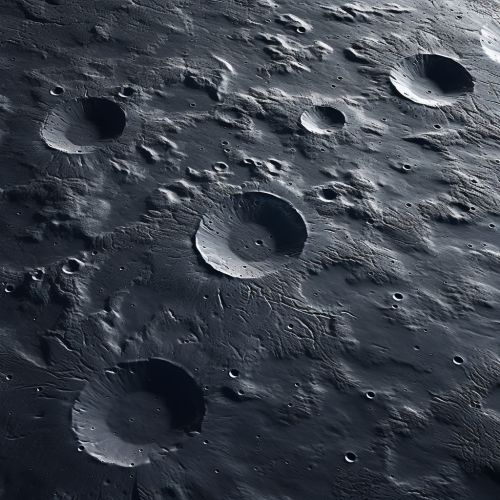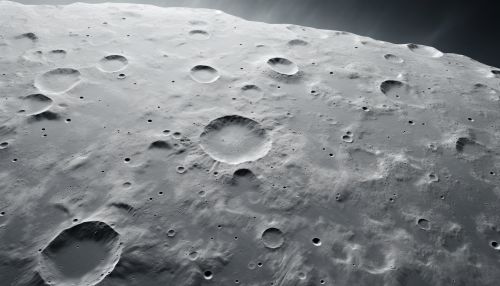Moon
Introduction
The Moon is the Earth's only natural satellite and the fifth largest moon in the Solar System. It is the largest natural satellite in the Solar System relative to the size of its planet, a quarter the diameter of Earth and 1/81 its mass, and is the second densest satellite after Jupiter's Io.
Formation
The prevailing hypothesis today is that the Earth–Moon system formed as a result of a giant impact, where a Mars-sized body (named Theia) collided with the newly formed proto-Earth, blasting material into orbit around it, which accreted to form the Moon. This hypothesis explains (among other things) the Moon's relative lack of iron and volatile elements and the fact that its composition is nearly identical to that of Earth's crust.
Physical Characteristics
The Moon is a differentiated body: it has a geochemically distinct crust, mantle, and core. The Moon has a solid iron-rich inner core with a radius possibly as small as 240 kilometers (150 mi) and a fluid outer core primarily made of liquid iron with a radius of roughly 300 kilometers (190 mi). Around the core is a partially molten boundary layer with a radius of about 500 kilometers (310 mi). This structure is thought to have developed through the fractional crystallization of a global magma ocean shortly after the Moon's formation 4.5 billion years ago.
Surface
The topography of the Moon has been measured with laser altimetry and stereo image analysis. Its most visible topographic feature is the giant far-side South Pole–Aitken basin, which possesses the lowest elevations of the Moon. The highest elevations are found just to the north-east of this basin, and it has been suggested that this area might have been thickened by the oblique formation impact of the South Pole–Aitken basin.
Atmosphere
The Moon has an atmosphere so thin as to be nearly vacuum, with a total mass of less than 10 metric tons. The surface pressure of this small mass is around 3 × 10−15 atm (0.3 nPa); it varies with the lunar day. Its sources include outgassing and sputtering, a product of the bombardment of lunar soil by solar wind ions.
Magnetic Field
The Moon has an external magnetic field of about 1–100 nanoteslas, less than one-hundredth that of Earth. It does not currently have a global dipolar magnetic field and only has crustal magnetization, probably acquired early in lunar history when a dynamo was still operating.
Orbit and Rotation
The Moon makes a complete orbit around Earth with respect to the fixed stars about once every 27.3 days (its sidereal period). However, because Earth is moving in its orbit around the Sun at the same time, it takes slightly longer for the Moon to show the same phase to Earth, which is about 29.5 days (its synodic period).
Exploration
The Moon has been the subject of many scientific missions and explorations, including the Apollo program that landed humans on its surface for the first time in history. Future manned missions to the Moon are planned, including government as well as privately funded efforts.
See Also


